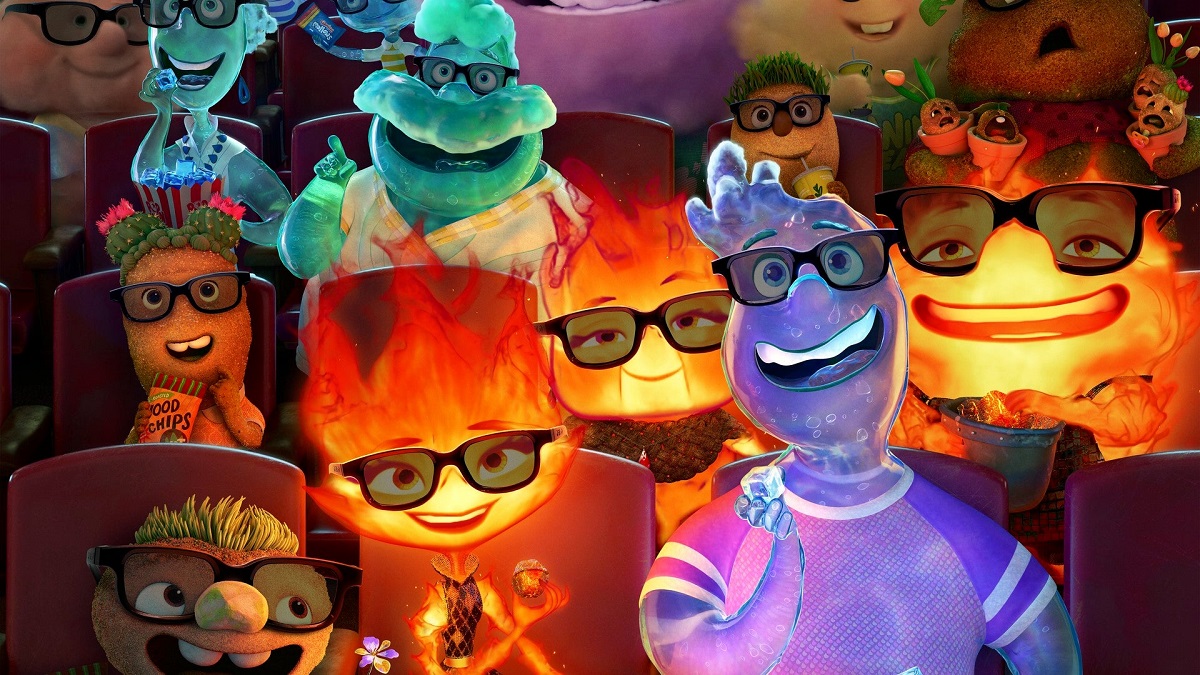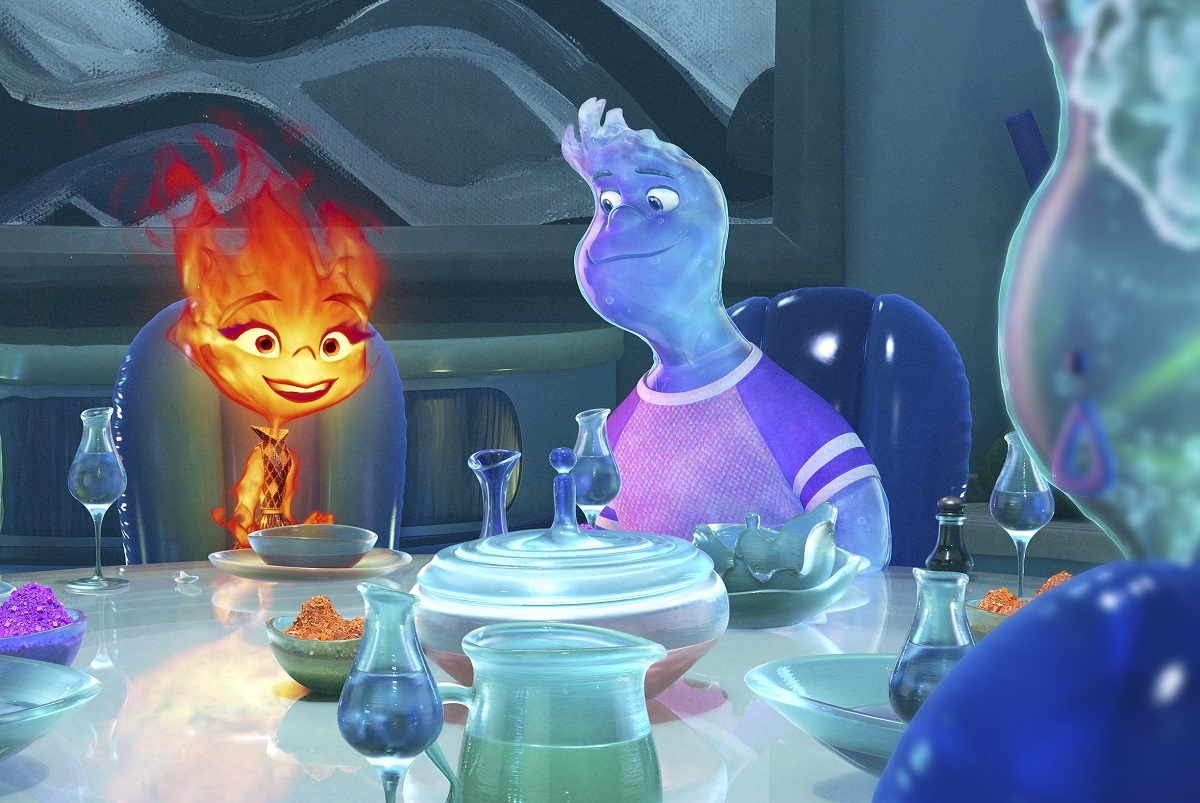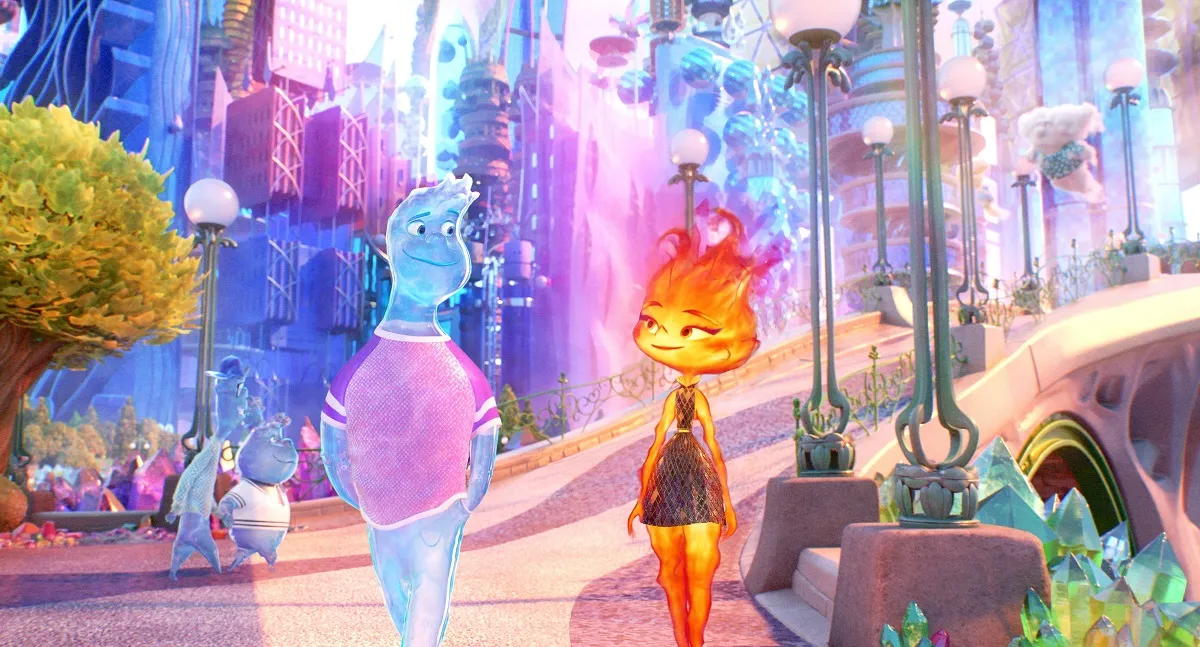When I wrote about The Flash‘s box office numbers, I mentioned that Pixar’s Elemental opened the same weekend and was also the subject of disappointed discussion around it being a “flop.”
In discussing The Flash, I brought up the many ways in which studios could take more responsibility for their perceived failures at the box office, rather than blame the audience. Many of those applied to Elemental. Now, I see that Elemental is an example of another film harmed by a recurring Hollywood sin: marketing a movie wrong.
First impressions of Elemental

In my Flash piece, I talked about my initial response to the Elemental trailer—that it looked like “Inside Out for elements.” There seemed to be a love story, but there’s a love story in damn near every Pixar movie. Even Inside Out was about the platonic love between Joy and Sadness and the love between Riley and her parents. So, nothing really stood out about Elemental in the marketing efforts that I saw, so I figured, “Meh. I’ll wait for streaming.”
Then, during the film’s opening weekend, I saw this beautiful handwritten note going around on social media from Elemental director, Peter Sohn. In it, he talked about his personal connection to this story, and it damn near made me cry.
The message reads:
My Name is Peter Sohn, Director of Elemental.
I’ve worked at Pixar for 23 years and never has a story felt so personal. I’m the child of immigrants. My parents left Korea in the late 1960s and came to New York where they crafted a beautiful life and community for my brother and I. Like our main character, Ember, I felt this intense calling to honor my family and their sacrifices. They gave up so much, so I can do this for them, right? I was drawn to animation from an early age. If there was any money left over from our family store, my mom would take my brother and I to the movies. Because her English was limited, we’d lean over and translate what was going on. When we saw animated films, I don’t remember translating anything for her. The medium itself was so powerful and transcendent of language that there were moments that brought her to tears. It hit me, “wow, animation can do that.”
Elemental is a love letter to my parents – thanking them for building such a supporting foundation for my brother and I. Unfortunately, I lost both of them during the production of this film and I miss them everyday. If you loved ones are still with you, please take a moment to thank them.Mom and Dad, This is for you.
Sincerely,
As a Latina writer born to Puerto Rican parents who moved to New York in their youths, both of whom I lost between 2006 and 2014, this note really hit home. I shared it with friends and said, “Aww. Now I really wanna see this! This is what I love about art—writing, in particular, for me. That we create stuff not only for other people to enjoy and wrestle with, but to express our own love and wrestle with our own questions and experiences with our lives and families.”
Why didn’t Pixar lead with this?

So, why is it that none of this heartfelt connection to a story about the child of immigrants found its way into the marketing push for the film? Considering that the whole myth of the United States (I say “myth” for … reasons) is that we’re proudly “a nation of immigrants,” you’d think they’d know that a metaphor about this might get butts in seats. And yet.
We’re already seeing how the film’s immigrant angle was a pleasant surprise to many critics. Our own Julia Glassman reviewed Elemental earlier this month and said,
“Then, finally, there’s the immigrant story—and this is where the movie finally does something really interesting. Ember is expected to take over the family business and marry a fellow fire person. Wade comes from a family whose members are privileged enough to bum around and follow their bliss. Ember’s situation is messy and complicated, and that’s what makes it so compelling. The glimpses we get of Fireland culture […] are vivid and believable. Wade’s family commits an excruciating series of microaggressions against Ember, but they mean well and try to do better. It’s clear that this is the story the filmmakers wanted to tell.”
Some critics, like Alison Willmore at Vulture, didn’t think the metaphor for intercultural romance was handled well. Still, the metaphor needed to be brought up and explained in reviews, because Pixar didn’t really bring it up.
There’s a big difference between presenting a Romeo and Juliet-esque story, and presenting something specifically related to race, ethnicity, and immigration.
The original trailer for 1961’s West Side Story really leaned into the hostility between the Jets and the Sharks, and there was no question that it was about race and ethnicity. It isn’t until the middle of the trailer that we even get to the Tony and Maria of it all.
Before they got to the love story at the show’s heart, they emphasized the world that this love is being born into—one in which white and brown people don’t get along. It’s very clear.
I wish Elemental’s marketing had been that clear.
(featured image: Walt Disney Studios Motion Pictures)









Published: Jun 22, 2023 02:39 pm